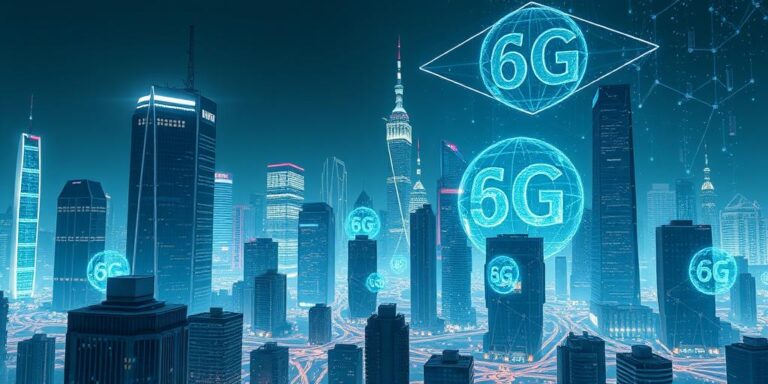6G Mobile Networks: A Glimpse into the Future of Gadgets (2030+)
As we become increasingly reliant on our gadgets, the demand for faster and more reliable mobile networks continues to grow. While 5G is still being rolled out globally, researchers and developers are already looking toward the next generation: 6G. This article explores what 6G mobile networks could enable for our gadgets, focusing on the potential technologies and applications expected around 2030 and beyond.
What is 6G?
6G is the sixth generation of wireless technology, promising even faster speeds, lower latency, and greater capacity than 5G. It aims to leverage new technologies such as terahertz (THz) frequencies, artificial intelligence (AI), and advanced network architectures to support a wider range of applications.
Expected Capabilities of 6G
- Ultra-Fast Speeds: 6G is expected to deliver speeds up to 1 terabit per second (Tbps), significantly faster than 5G’s maximum of around 10 gigabits per second (Gbps). This would enable near-instantaneous data transfer.
- Extremely Low Latency: Latency could be reduced to as little as 1 microsecond, a dramatic improvement over 5G. This is crucial for applications requiring real-time responses.
- Enhanced Capacity: 6G networks will support a massive increase in the number of connected devices, essential for the proliferation of IoT devices and smart environments.
How Will 6G Impact Gadgets?
-
Augmented and Virtual Reality (AR/VR):
- Enhanced Experiences: With 6G’s high speeds and low latency, AR and VR applications will become more immersive and realistic. Gadgets like AR glasses and VR headsets will offer seamless, lag-free experiences, blurring the lines between the physical and digital worlds. High-resolution streaming and real-time interaction will be standard.
- Applications: Remote collaboration, training simulations, and immersive entertainment will benefit significantly. Imagine attending a virtual concert with the same sensory experience as being there in person.
-
Holographic Communications:
- Real-Time Holograms: 6G could make real-time holographic communication a reality. Gadgets equipped with holographic display capabilities will allow users to interact with 3D representations of people and objects, enhancing remote communication and collaboration.
- Applications: Telepresence in meetings, remote surgery, and interactive education will be transformed. Doctors could perform complex procedures remotely with unprecedented precision.
-
Advanced IoT Devices:
- Smart Environments: 6G will support a massive increase in the number of connected IoT devices. Smart homes, smart cities, and industrial IoT will become more integrated and responsive.
- Applications: Real-time monitoring of infrastructure, personalized healthcare through wearable sensors, and optimized resource management will be commonplace. Smart devices will communicate seamlessly, creating more efficient and sustainable environments.
-
AI-Enhanced Gadgets:
- Intelligent Assistants: 6G will enable more sophisticated AI-powered gadgets. Virtual assistants will become more proactive and personalized, anticipating user needs and providing seamless support.
- Applications: Context-aware devices, predictive analytics for healthcare, and autonomous systems will become more prevalent. Gadgets will learn from user behavior, adapting to individual preferences and optimizing performance.
-
Autonomous Systems:
- Self-Driving Vehicles: 6G is crucial for the development of fully autonomous vehicles. The ultra-low latency and high reliability of 6G networks will enable vehicles to communicate with each other and with infrastructure in real-time, enhancing safety and efficiency.
- Applications: Autonomous drones, robotic delivery systems, and smart logistics will transform transportation and logistics. Real-time data processing and coordination will optimize routes and reduce congestion.
Challenges and Considerations
- Technological Hurdles: Developing the infrastructure and technology to support 6G presents significant challenges. The use of THz frequencies requires new materials and components, and AI integration demands advanced algorithms and processing power.
- Regulatory Issues: Governments and regulatory bodies need to establish standards and allocate spectrum for 6G. International cooperation is essential to ensure seamless global connectivity.
- Security Concerns: As with any new technology, security is a major concern. 6G networks must be designed to protect against cyber threats and ensure data privacy.
Conclusion
6G mobile networks promise to revolutionize the capabilities of our gadgets, enabling ultra-fast speeds, extremely low latency, and enhanced capacity. While the full potential of 6G is still years away, the expected advancements in AR/VR, holographic communications, IoT devices, AI-enhanced gadgets, and autonomous systems are set to transform how we interact with technology. Overcoming the technological, regulatory, and security challenges will be crucial to realizing the full benefits of 6G. As we look toward 2030 and beyond, the future of gadgets powered by 6G is bright and full of possibilities.




